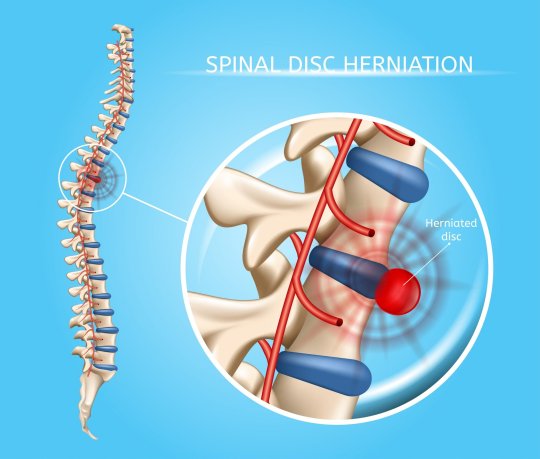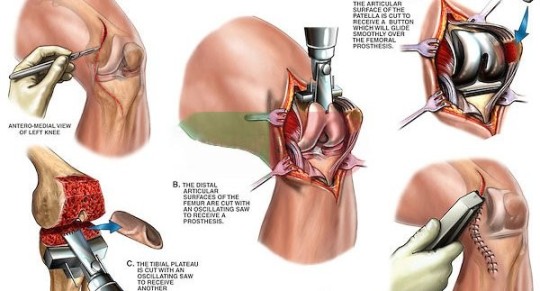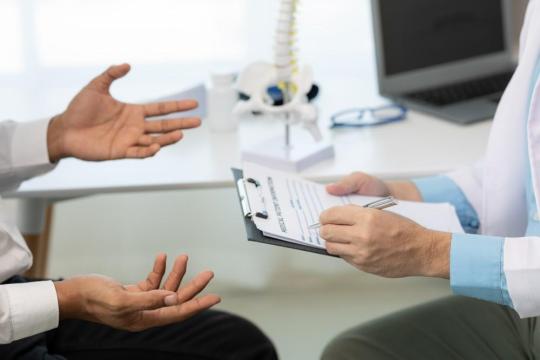#orthospinesurgeoninkota
Explore tagged Tumblr posts
Text
What are the common causes of bone infections?
Bone infections, also known as osteomyelitis, can be caused by various factors. Here are some common causes:

1. Bacterial Infections: Bacteria are the most common culprits, with Staphylococcus aureus being a frequent offender. Infections can spread to bones through: Direct Inoculation: When bacteria enter the bone through a fracture or surgery. Hematogenous Spread: When bacteria from another part of the body travel through the bloodstream to the bone. Contiguous Spread: When an infection from nearby tissues, such as skin or joint infections, spreads to the bone.
2. Fungal Infections: Fungal infections are less common but can occur, particularly in individuals with weakened immune systems. Fungi like Candida and Aspergillus can infect the bone, often spreading from another infection site.
3. Chronic Conditions: Conditions like diabetes, which can lead to poor circulation and immune system compromise, increase the risk of bone infections. People with chronic diseases are more susceptible to infections due to compromised healing processes and potential for recurrent infections.
4. Trauma or Injury: Severe injuries or trauma, such as compound fractures where the bone is exposed, can lead to infections.Top orthopedic doctor in kota The break in the skin and underlying tissues provides a pathway for bacteria.
5. Surgical Procedures: Post-surgical infections can occur if bacteria enter the bone during surgery.Top orthopedic doctor in kota This risk is especially pronounced in procedures involving the insertion of hardware, such as plates or screws.
6. Poor Circulation: Conditions that impair blood flow, such as peripheral vascular disease, can make it harder for the body to fight infections and heal, increasing the risk of osteomyelitis.
7. Immune System Disorders: Individuals with compromised immune systems, whether due to conditions like HIV/AIDS, cancer treatments, or autoimmune diseases,Top orthopedic doctor in kota are at higher risk for bone infections.
8. Existing Infections: Infections like those of the skin (cellulitis) or joints (septic arthritis) can sometimes spread to the bone.
Preventing bone infections often involves managing chronic conditions effectively, practicing good hygiene, and promptly addressing any injuries or infections. If you have concerns about bone infections or are at risk, it’s best to consult with a healthcare professional for personalized advice and treatment options.
#bestorthopedicdoctorinkota#orthopedicdoctorinkota#orthospinesurgeoninkota#spinespecialistinkota#spinesurgeoninkota#spinedoctorinkota#orthopedicdoctorkota#toporthopedicdoctorinkota
0 notes
Text
Are there any alternative treatments to discectomy for spinal disc issues?
Yes, there are several alternative treatments to discectomy for spinal disc issues, depending on the specific condition and severity of the problem. Here are some options:

1. Physical Therapy: Physical therapy can help strengthen the muscles around the spine, improve flexibility, and reduce pain. Techniques may include exercises, stretches, and modalities like heat or cold therapy.
2. Medications: Nonsteroidal anti-inflammatory drugs (NSAIDs), pain relievers, and muscle relaxants can help manage pain and inflammation. In some cases, corticosteroid injections may be used to reduce inflammation in the affected area.Top orthopedic doctor in kota
3. Chiropractic Care: Chiropractors use spinal manipulation and other techniques to improve spinal alignment and function. This approach may help alleviate pressure on nerves and reduce pain..Top orthopedic doctor in kota
4. Acupuncture: This traditional Chinese medicine practice involves inserting thin needles into specific points on the body to help relieve pain and promote healing.
5. Massage Therapy: Therapeutic massage can help reduce muscle tension, improve circulation, and alleviate pain in the affected area..Top orthopedic doctor in kota
6. Osteopathic Manipulative Treatment (OMT): Osteopathic physicians may use OMT to address musculoskeletal issues, including those affecting the spine.
7. Lifestyle Modifications: Weight management, ergonomic adjustments at work or home, and changes in activity levels can help reduce stress on the spine and improve overall function.
8. Alternative Therapies: Techniques like yoga or Pilates can improve flexibility, strengthen core muscles, and support spinal health.
9. Spinal Injections: In addition to corticosteroids, other types of spinal injections, such as nerve blocks or epidural injections, can help manage pain and inflammation.
10. Radiofrequency Ablation (RFA): This procedure uses radio waves to create heat and disrupt nerve signals that are causing pain.
It’s important to consult with a healthcare professional to determine the best treatment plan based on your specific condition and overall health.
#spinesurgeoninkota#spinespecialistinkota#slippeddiscspecialistinkota#orthospinesurgeoninkota#bestorthopedicdoctorinkota#orthopedicdoctorinkota#toporthopedicdoctorinkota#orthopedicdoctorkota
0 notes
Text
What is the recovery process like after a discectomy surgery?
Recovery after a discectomy, which is surgery to remove a herniated disc in the spine, generally involves several stages and varies depending on the individual. Here’s a general overview:

1. Immediate Post-Surgery (Days 1–2): — Hospital Stay: You might stay in the hospital for a day or two, depending on the specifics of your surgery and how you’re feeling. — Pain Management: Pain is managed with medications. Some discomfort is normal, but it should improve over time.Top orthopedic doctor in kota — Mobility: You’ll likely be encouraged to start moving as soon as possible. Gentle walking can help promote circulation and prevent complications.
2. Early Recovery (Weeks 1–4): — Activity Levels: Gradually increase your activity level, but avoid heavy lifting or strenuous activities. Follow your surgeon’s guidelines on what you can and cannot do.Top orthopedic doctor in kota — Physical Therapy: Your doctor might recommend physical therapy to help strengthen the muscles around your spine and improve flexibility. — Follow-Up Appointments: You’ll have follow-up visits with your surgeon to monitor your progress and make sure you’re healing well.
3. Intermediate Recovery (Weeks 4–12): — Returning to Work: Depending on your job, you may be able to return to work, possibly with modifications. Your doctor will advise when it’s safe to resume normal work activities.Top orthopedic doctor in kota — Continued Therapy: Ongoing physical therapy may be necessary to continue improving your strength and flexibility.
4. Long-Term Recovery (Months 3–6): — Full Recovery: Most people return to their normal activities within a few months, though full recovery can take up to six months or longer. — Lifestyle Adjustments: Adopting good posture, regular exercise, and ergonomic adjustments at work can help maintain the health of your spine and prevent future issues.
Everyone’s recovery timeline can be different, and some people might experience lingering symptoms or complications. It’s crucial to follow your healthcare provider’s instructions and communicate any concerns you have during your recovery.
#spinesurgeoninkota#spinespecialistinkota#slippeddiscspecialistinkota#orthospinesurgeoninkota#bestorthopedicdoctorinkota#orthopedicdoctorinkota#toporthopedicdoctorinkota#orthopedicdoctorkota
0 notes
Text
What are the risks and complications associated with a discectomy procedure?
A discectomy is a surgical procedure to remove part or all of a herniated or damaged disc in the spine to relieve pressure on a nerve root or the spinal cord. While it can provide significant relief from symptoms such as pain, numbness, or weakness, there are several risks and complications associated with the procedure:

1. Infection: As with any surgical procedure, there is a risk of infection at the incision site or within the spinal area.Top orthopedic doctor in kota
2. Bleeding: Excessive bleeding during or after surgery can occur, though it’s generally rare.
3. Nerve Damage: There is a risk of nerve injury, which could potentially lead to worsening symptoms or new neurological deficits.Top orthopedic doctor in kota
4. Spinal Fluid Leak: During the procedure, a tear in the dura mater (the protective covering of the spinal cord) might occur, leading to a spinal fluid leak.
5. Recurrent Disc Herniation: There’s a chance that the disc may herniate again in the same area or a nearby disc could become problematic.
6. Chronic Pain: Some patients may continue to experience pain after the procedure, although this is less common.
7. Instability: Removing a disc can potentially affect the stability of the spine, which might lead to issues like spinal instability or additional back problems over time.
8. Scar Tissue Formation: Scar tissue can form around the surgical site, potentially leading to ongoing pain or nerve irritation.
9. Blood Clots: There’s a risk of developing blood clots in the legs (deep vein thrombosis) or lungs (pulmonary embolism), particularly if mobility is limited after surgery.
10. Anesthesia Risks: As with any procedure requiring general anesthesia, there are risks associated with the anesthesia itself, Top orthopedic doctor in kota including allergic reactions or complications related to pre-existing conditions.
It’s important to discuss these risks with your surgeon, who can provide information specific to your situation and help you weigh the benefits and risks of the procedure.
#spinesurgeoninkota#spinespecialistinkota#slippeddiscspecialistinkota#orthospinesurgeoninkota#bestorthopedicdoctorinkota#orthopedicdoctorinkota#toporthopedicdoctorinkota#orthopedicdoctorkota
0 notes
Text
What is a discectomy and when is it recommended?
A discectomy is a surgical procedure aimed at relieving pressure on a spinal nerve root or the spinal cord by removing a portion of a herniated or damaged intervertebral disc.Top orthopedic doctor in kota The intervertebral discs are the cushioning structures between the vertebrae in the spine. When a disc herniates, it can bulge out and press against nearby nerves, causing pain, numbness, or weakness.

A discectomy might be recommended in the following situations:
1. Severe Pain: When a herniated disc causes significant and persistent pain that doesn’t improve with conservative treatments like physical therapy, medications,Top orthopedic doctor in kota or injections.
2. Neurological Symptoms: If the herniated disc is causing severe neurological symptoms such as weakness, numbness, or loss of function in the arms or legs that impair daily activities and don’t respond to other treatments.
3. Chronic Conditions: For patients with chronic disc issues that don’t resolve with non-surgical methods,Top orthopedic doctor in kota particularly if they experience worsening symptoms over time.
4. Failed Conservative Treatment: When non-surgical treatments, including medications, physical therapy, and lifestyle changes, haven’t been effective after a reasonable period.
5. Significant Disc Protrusion: If imaging studies show a significant disc herniation that is causing compression on the spinal nerves or cord, and conservative measures have not provided relief.
The decision to proceed with a discectomy is typically made after careful evaluation by a spinal specialist, who will consider factors such as the severity of symptoms, the patient’s overall health, and the impact on their quality of life.
#spinesurgeoninkota#spinespecialistinkota#slippeddiscspecialistinkota#orthospinesurgeoninkota#bestorthopedicdoctorinkota#orthopedicdoctorinkota#toporthopedicdoctorinkota#orthopedicdoctorkota
0 notes
Text
Are there any exercises or stretches that can help alleviate carpal tunnel symptoms?
Yes, there are several exercises and stretches that can help alleviate carpal tunnel syndrome symptoms. These can help reduce pressure on the median nerve, improve circulation, and strengthen the muscles around the wrist and hand.Top orthopedic doctor in kota Here are some you might find useful:

Stretching Exercises:
1. Wrist Flexor Stretch: — Extend one arm straight in front of you, palm up. — With the other hand, gently pull back on the fingers of the extended hand to stretch the forearm muscles. — Hold the stretch for about 15–30 seconds. — Repeat 2–3 times for each hand.
2.Wrist Extensor Stretch: — Extend one arm straight in front of you, palm down. — Use the other hand to gently press down on the back of the extended hand to stretch the top of the forearm. — Hold for 15–30 seconds. — Repeat 2–3 times for each hand.
3.Nerve Gliding Exercises: — Start with your arm at your side and your fingers straight. — Slowly extend your arm out to the side with your palm facing up. — Gently bend your wrist back and extend your fingers to stretch the median nerve. — Hold for a few seconds, then slowly return to the starting position. — Repeat 5–10 times.
Strengthening Exercises:
1. Wrist Curls: — Sit with your forearm resting on a table or your thigh, hand hanging off the edge, palm up. — Hold a light dumbbell and curl your wrist upward. — Lower it back slowly. — Perform 10–15 repetitions, 2–3 sets for each hand.
2. Reverse Wrist Curls: — Similar to wrist curls, but with your palm facing down. — Curl your wrist upward and then lower it back down slowly. — Perform 10–15 repetitions, 2–3 sets for each hand.
3. Grip Strengthening: — Use a soft tennis ball or stress ball. — Squeeze the ball as hard as you can and hold for a few seconds. — Release and repeat 10–15 tim
General Tips:
- Wrist Position: Be mindful of wrist position during daily activities. Try to keep your wrists in a neutral position, avoiding extreme flexion or extension. - Frequent Breaks:Take breaks during repetitive tasks to rest your hands and wrists.Top orthopedic doctor in kota Ergonomics: Ensure your workstation is ergonomically friendly to avoid straining your wrists.
If symptoms persist or worsen, it’s important to consult with a healthcare provider.Top orthopedic doctor in kota They can provide a more tailored approach and assess if further treatment or modifications are necessary.
#spinesurgeoninkota#spinespecialistinkota#slippeddiscspecialistinkota#orthospinesurgeoninkota#bestorthopedicdoctorinkota#orthopedicdoctorinkota#toporthopedicdoctorinkota#orthopedicdoctorkota
0 notes
Text
What are the common types of joint surgery procedures?
There are several common types of joint surgery procedures, each designed to address specific issues related to joint damage, injury, or degeneration. Here are some of the most prevalent types:

1. Total Joint Replacement (Arthroplasty): — Hip Replacement: Involves replacing the hip joint with a prosthetic implant due to conditions like osteoarthritis or fractures.Top orthopedic doctor in kota — Knee Replacement: Involves replacing all or part of the knee joint with an artificial implant, often due to severe osteoarthritis or injury.
2. Joint Arthroscopy: — A minimally invasive procedure where a surgeon inserts a thin, flexible instrument (arthroscope) through a small incision to diagnose and treat joint problems. Commonly performed on knees, shoulders, hips, ankles, and wrists.Top orthopedic doctor in kota
3. Joint Fusion (Arthrodesis): — Involves fusing the bones in a joint together to eliminate painful motion. It’s often used in cases of severe arthritis or failed joint replacement.
4. Joint Repair: — Various techniques to repair damaged joints or soft tissues within joints, such as ligament repairs in the knee Top orthopedic doctor in kota (e.g., ACL reconstruction) or labral repairs in the shoulder or hip.
5. Osteotomy: — Involves cutting and reshaping bones to correct alignment issues in a joint, particularly in cases of osteoarthritis affecting one side of a joint (e.g., knee osteotomy).
6. Revision Joint Surgery: — Corrective surgery performed to replace or repair a previous joint replacement that has worn out, loosened, or failed for other reasons.
7. Cartilage Restoration: — Techniques aimed at repairing or regenerating damaged cartilage within a joint, such as microfracture, autologous chondrocyte implantation (ACI), or osteochondral autograft transplantation (OATS).
These procedures are tailored to the specific condition and needs of the patient, often with the goal of reducing pain, improving joint function, and enhancing overall quality of life.
#spinesurgeoninkota
#spinespecialistinkota#slippeddiscspecialistinkota#orthospinesurgeoninkota#bestorthopedicdoctorinkota#orthopedicdoctorinkota#toporthopedicdoctorinkota#orthopedicdoctorkota
0 notes
Text
How succsessfull is spine surgery in relieving pain and improving mobility

The success of spine surgery in relieving pain and improving mobility can vary widely depending on several factors:
1. Condition and Severity: The specific spinal condition being treated (such as herniated disc, spinal stenosis, etc.) and its severity play a significant role. In general, surgery tends to be more effective for conditions where there is a clear anatomical problem that surgery can address, such as a compressed nerve or unstable spine segment.
2. Patient Health: The overall health of the patient, including age, other medical conditions, and lifestyle factors, can affect surgical outcomes. Generally, healthier patients tend to have better outcomes.
3. Technique: Advances in surgical techniques, such as minimally invasive approaches, have improved outcomes for many patients. Minimally invasive surgeries often result in less tissue damage, quicker recovery times, and reduced risk of complications compared to traditional open surgeries.
4. Post-operative Care and Rehabilitation:The success of spine surgery also depends on how well the patient follows post-operative care instructions and participates in rehabilitation programs.Top orthopedic doctor in kota Physical therapy and rehabilitation are often crucial for restoring mobility and function after surgery.
5. Expectations: Managing expectations is important. While spine surgery can significantly improve pain and mobility for many patients, it may not completely eliminate symptoms in all cases.Top orthopedic doctor in kota Some patients may still experience residual symptoms or require additional treatments.
6. Complications: Like any surgical procedure, spine surgery carries risks of complications such as infection, blood clots, nerve damage, or failed surgery (where symptoms persist or recur).
Overall, the success rate of spine surgery in relieving pain and improving mobility varies, but many patients experience significant improvement in their symptoms and quality of life. Top orthopedic doctor in kota It’s important for patients to discuss their specific condition and expected outcomes with their healthcare provider to make an informed decision about surgery.
#orthospinesurgeoninkota#bestorthopedicdoctorinkota#orthopedicdoctorinkota#toporthopedicdoctorinkota#orthopedicdoctorkota
0 notes
Text
How can i prepare for spine surgery?

Preparing for spine surgery involves several important steps to ensure the best possible outcome and recovery. Here are some key things to consider and steps to take:
1. Consultation and Evaluation: — Make sure you have consulted with a qualified spine surgeon who has thoroughly evaluated your condition and recommended surgery as the best course of action.
2. Educate Yourself: — Understand the details of the surgery you will undergo, including the procedure itself, expected outcomes, risks, and potential complications. This will help alleviate anxiety and allow you to ask informed questions.
3. Preoperative Testing: — Your surgeon may order specific tests such as blood work, imaging (like MRI or CT scan), and possibly cardiac evaluation to ensure you are fit for surgery.
4. Medications: — Discuss with your surgeon and primary care physician about any medications you currently take, including over-the-counter medications and supplements. Some may need to be adjusted or temporarily stopped before surgery.
5. Quit Smoking and Alcohol: — If you smoke, quitting before surgery can improve healing and reduce the risk of complications. Similarly, limiting alcohol intake is important.
6. Nutrition: — Eating a healthy diet rich in fruits, vegetables, and lean proteins can help support your body’s healing process.
7. Exercise: — Engage in light exercise as recommended by your surgeon or physical therapist to improve your overall fitness level and strengthen muscles that may support your spine.
8. Home Preparation: — Arrange your home to make it easier to move around, especially if you will have mobility restrictions after surgery. Top orthopedic doctor in kota
This may include setting up a recovery area on the ground floor if stairs are challenging.
9. Support System: — Arrange for help from family members or friends during your recovery period. They can assist with daily tasks and provide emotional support.
10. Postoperative Care: — Understand the postoperative care plan, including medications, physical therapy, and follow-up appointments. This will help you transition smoothly from hospital to home care.
11. Mental Preparation: — Prepare yourself mentally for the surgery and recovery process. Techniques like relaxation exercises, meditation, or talking to a counselor can help reduce anxiety.
12. Logistics: — Plan for transportation to and from the hospital on the day of surgery. Ensure someone is available to accompany you, as you may not be able to drive yourself home.
13.Follow Instructions: — Follow all preoperative instructions provided by your surgical team, including fasting requirements before surgery.
14. Ask Questions: — Don’t hesitate to ask your surgeon any questions you have about the surgery or recovery. Understanding the process can help you feel more in control and prepared.
By taking these steps, you can help optimize your recovery and ensure a successful outcome from your spine surgery. top orthopedic doctor in Kota Always follow the specific guidance provided by your healthcare team based on your individual circumstances.
#spinesurgeoninkota#spinespecialistinkota#slippeddiscspecialistinkota#spinedoctorinkota#orthospinesurgeoninkota#bestorthopedicdoctorinkota#orthopedicdoctorinkota#toporthopedicdoctorinkota#orthopedicdoctorkota
0 notes
Text
what is spine surgery?
Spine surgery refers to surgical procedures performed on the spine (backbone) to correct problems related to the spine’s structure or function. The spine is a complex structure made up of vertebrae, discs, nerves, and other tissues that provide support, flexibility, and protection for the spinal cord and nerves.

There are various reasons why someone might need spine surgery, including:
1.Degenerative Disc Disease: This involves wear and tear of the discs between the vertebrae,Best orthopedic doctor in kota leading to pain and sometimes nerve compression. 2.Herniated Disc: When the gel-like material within a disc protrudes and puts pressure on nearby nerves.
3.Spinal Stenosis: Narrowing of the spinal canal which can compress the spinal cord and nerves.
4. Spinal Fractures: Such as those caused by trauma or osteoporosis.
5. Scoliosis: Abnormal curvature of the spine.
6.Tumors: Both benign and malignant tumors can develop in the spine.
Spine surgery aims to relieve pain, stabilize the spine, and restore function. The specific procedure depends on the condition being treated and can range from minimally invasive procedures Best orthopedic doctor in kota that involve smaller incisions and quicker recovery times to more extensive surgeries that involve spinal fusion or disc replacement.
It’s important to note that spine surgery is typically considered after non-surgical treatments (such as physical therapy, medications, and injections)Best orthopedic doctor in kota have been attempted and found ineffective. As with any surgery, there are risks involved, and decisions about spine surgery should be carefully discussed between the patient and their healthcare provider.
#spinespecialistinkota#slippeddiscspecialistinkota#spinedoctorinkota#orthospinesurgeoninkota#bestorthopedicdoctorinkota#orthopedicdoctorinkota#toporthopedicdoctorinkota#orthopedicdoctorkota
0 notes